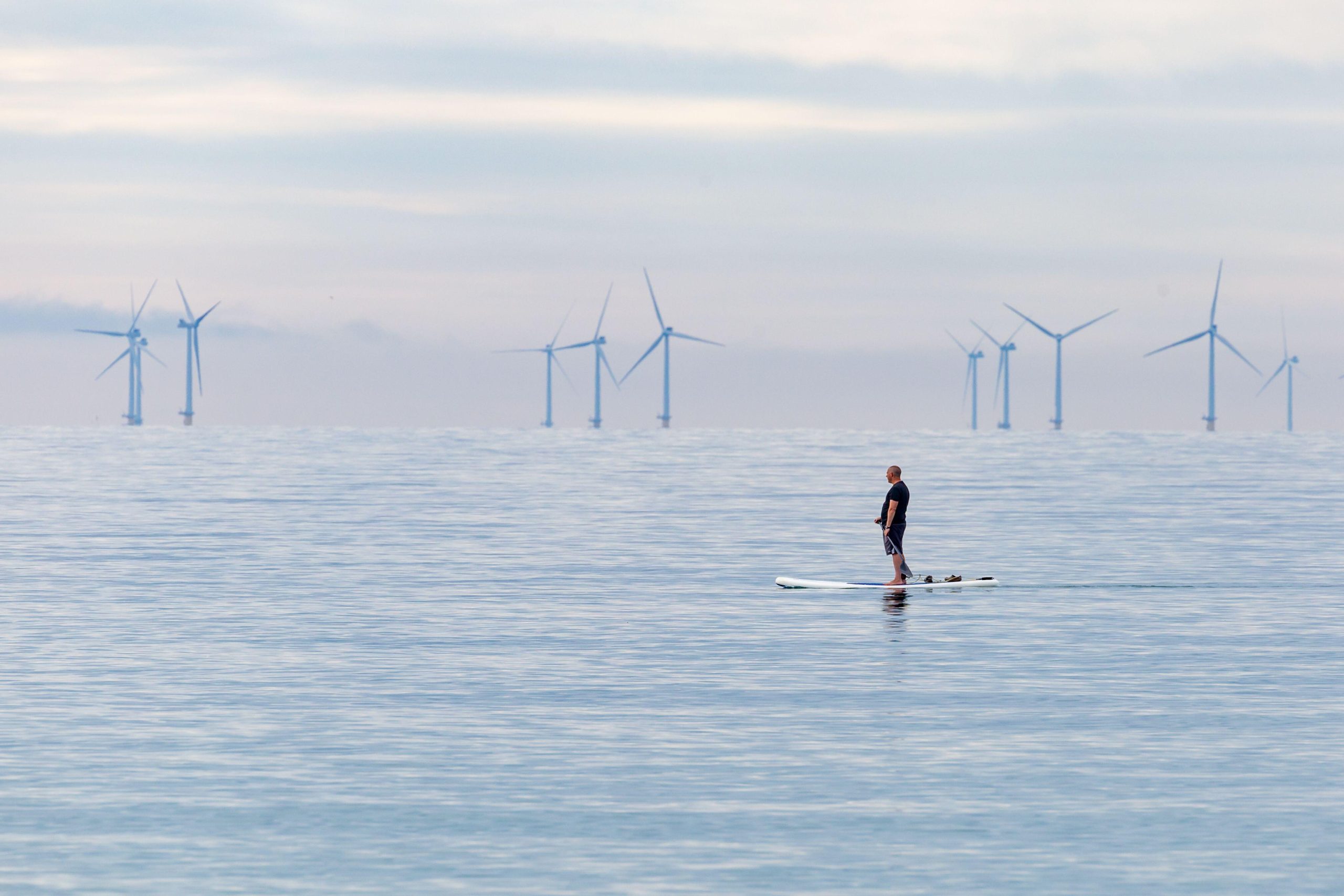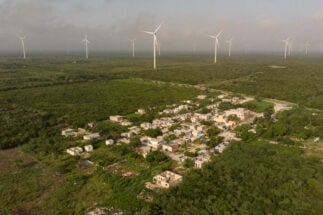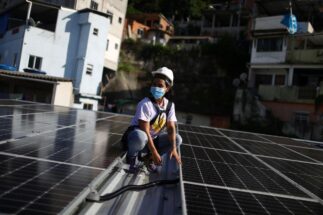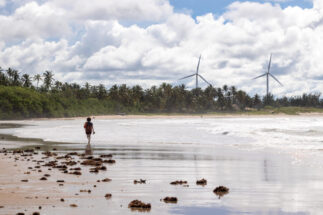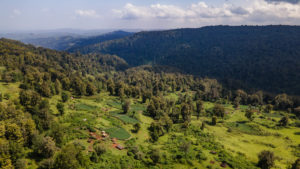Three decades after the world’s first offshore wind farm was built, Latin America – which currently has no such facility – is beginning to take an interest in this energy source, a pivot that experts say has come at an ideal time in the drive to promote the region’s energy transition.
The offshore wind industry has matured and grown rapidly in the past decade, after slow growth since the first turbines were installed in Denmark in 1991. Approximately 56 gigawatts (GW) of offshore wind power capacity has been installed around the world, primarily in Europe and China.
21 GW
The offshore wind capacity added globally in 2021, an annual record that took global installed capacity to 56 GW, according to the Global Wind Energy Council
Offshore wind has some advantages over other renewable energy technologies. Ingrid Pacheco Silveira, a Brazilian offshore wind consultant, points out that turbines take advantage of the lack of barriers present on land to spin faster, and generate energy more consistently and uniformly than onshore wind or solar photovoltaic.
“Something that was demonstrated from the first projects is that larger turbines can be used in the marine environment than in onshore wind farms – and with a scalability that can bring huge benefits to Latin America,” she adds.
The Energy Sector Management Assistance Programme, a World Bank initiative, notes that a quarter of the world’s offshore wind potential is in the waters off low- and middle-income countries. Accelerating its adoption in emerging markets has therefore become essential to reduce dependence on fossil fuels and, it says, to reduce poverty.
In the last decade, the offshore wind industry has shown accelerated growth, driven mainly by China and OECD countries. Last year, the wind industry saw record new installations for offshore wind power, with 21 GW of capacity add across the world.
This relatively recent breakthrough is mainly due to a reduction in costs and a substantial increase in turbine size and project scale, says Christian Appendini, an oceanographer in the Laboratory of Engineering and Coastal Processes at the National Autonomous University of Mexico. “As it is now cost-competitive, some governments plan to make it a key component of their decarbonised energy mix,” he adds.
Huge potential
The benefits of increasing offshore wind capacity can be manifold. Countries using this energy can generate electricity in a predictable way and increase its production in autumn and winter – seasons of lower solar radiation and higher energy consumption – and can also create and maintain thousands of highly skilled jobs. Offshore wind may also complement other renewable technologies in Latin America, providing security of supply
There is a huge untapped resource potential in Latin America and the Caribbean, World Bank data shows, with an estimated technical potential of around 8,000 GW in the region’s waters. Some countries have excellent natural conditions, which means that this energy could be technically and economically viable. Brazil and Colombia are currently the most advanced in their offshore wind legislation: Brazilian industry developers, for example, have proposed more than 130 GW of offshore wind capacity across 55 projects.
Brazil and Colombia move forward
Moving back onto dry land, Brazil is currently the largest market for onshore wind in Latin America, followed by Mexico, Chile and Argentina. The Brazilian oil and gas industry, however, mainly operates offshore and has a well established supply chain that can be adapted to meet the specific needs of offshore wind, Pacheco Silveira says, and also points to a number of regulatory developments that have helped lay foundations for the industry.
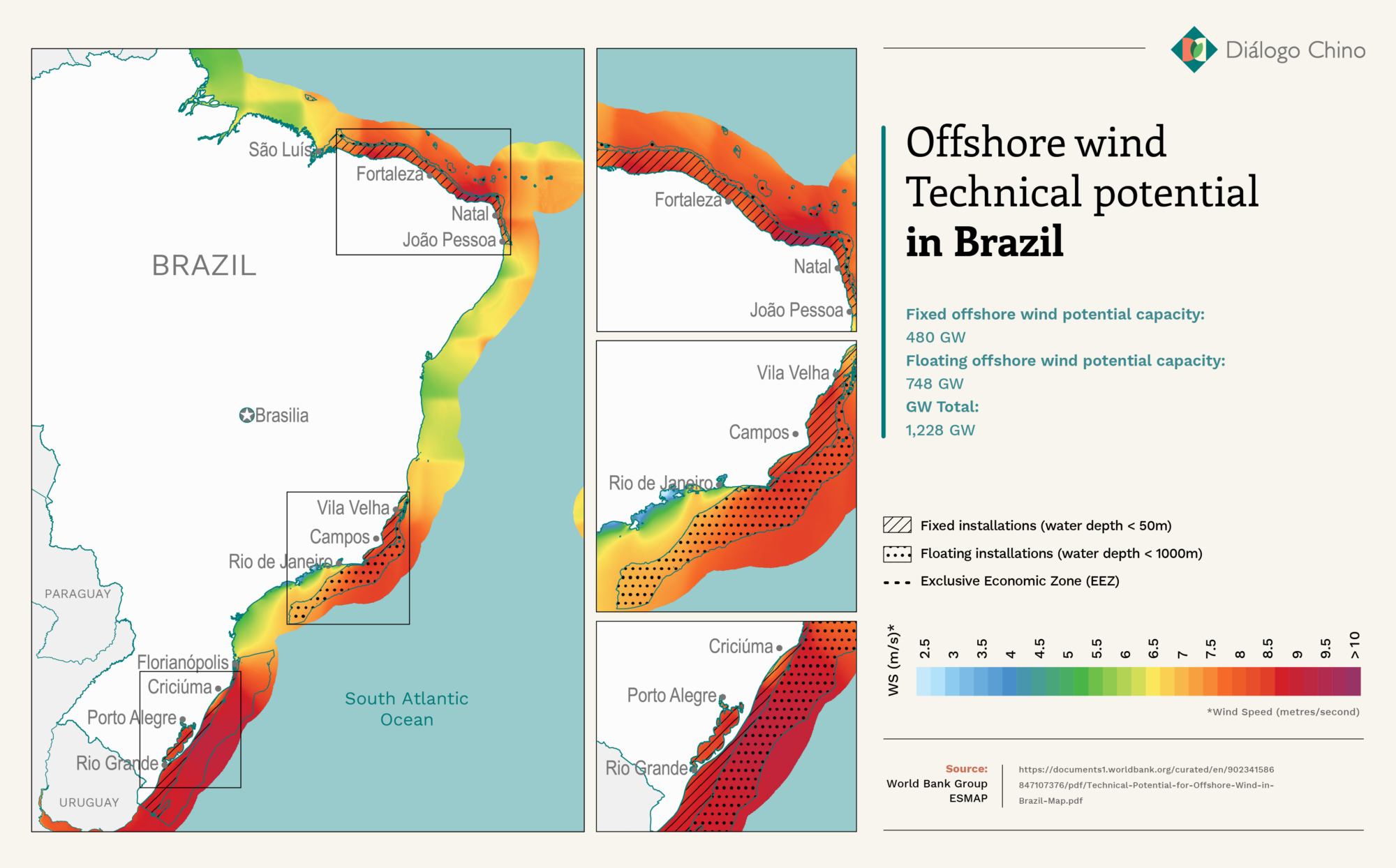
Further north in Colombia, a new chapter is beginning to be written on the energy agenda with offshore wind power, or so the country’s Ministry of Mines and Energy words it, in its own recently launched roadmap for the industry.
Diego Mesa Puyo, Colombia’s outgoing energy minister, spoke to Diálogo Chino two days after the announcement of a programme to stimulate growth in offshore wind energy, with potentially billions of dollars of investment.
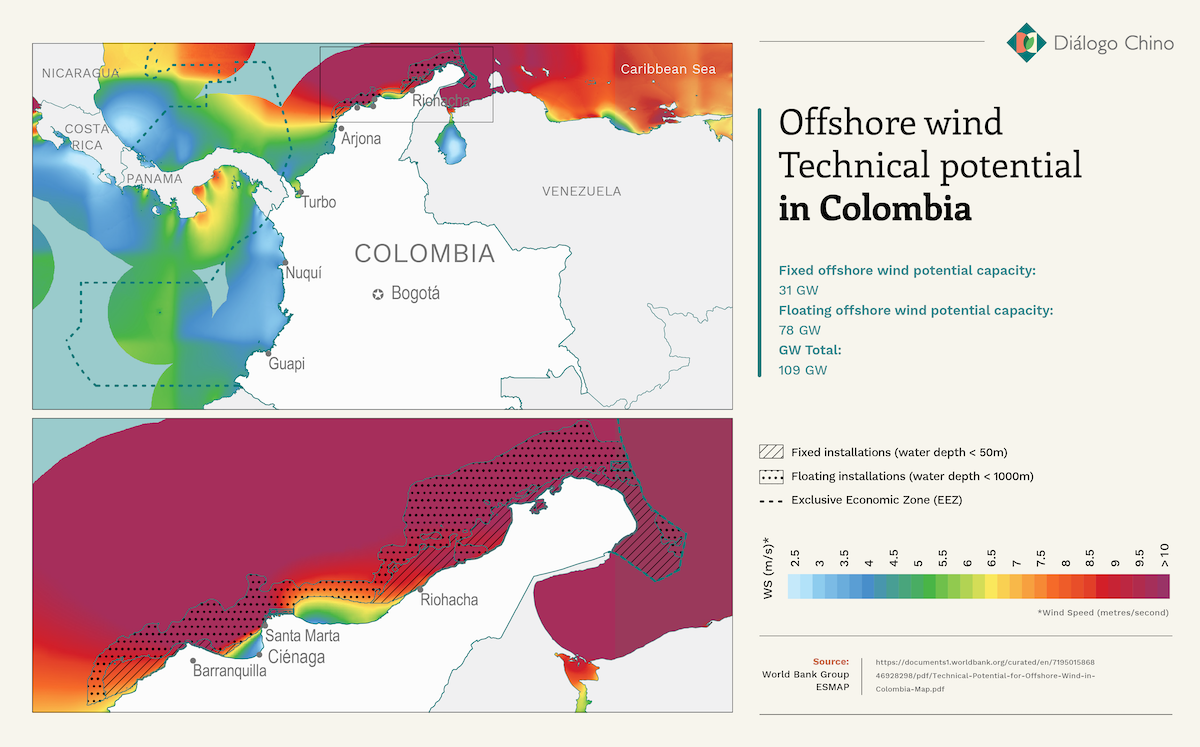
“This type of technology is much less invasive and does not generate greenhouse gases, a breakthrough from the point of view of carbon neutrality. In economic terms, these projects require very significant capital investments – for example, projects such as those already being built in Colombia in the next three or four years will require investments of around US$1 billion,” the energy minister said, but added that he believes “this industry will be very attractive for the economic development of any country”.
Some complexities
The main technological challenge of offshore wind energy lies in the difficulty of its installation, as construction and maintenance requires the use of highly specialised equipment. Different offshore wind structures exist, including turbines with fixed foundations and those on floating platforms.
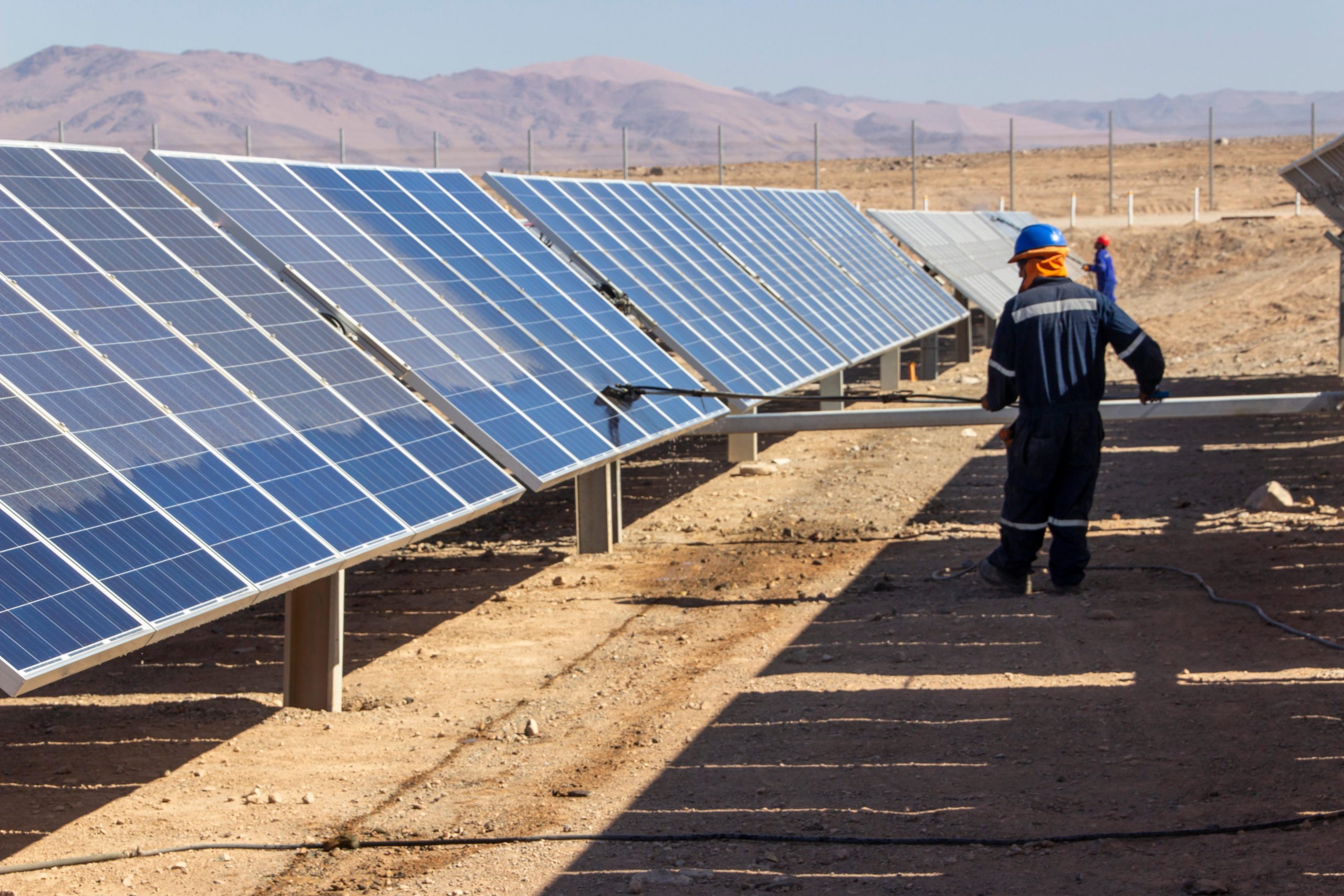
Mesa Puyo agrees that the big challenge lies in the logistical side and port infrastructure, due to “wind turbine towers that can be more than 200 metres high and require complex assembly”.
Ingrid Pacheco, for her part, emphasises that regulation will influence the progress of the industry: “Generally, in order to install an offshore wind farm, it is necessary to have exhaustive approvals after carrying out studies during the previous years that include, among others, the compatibility of the structure with navigation, marine fauna, migration routes, transport dynamics and more.”
Others consulted point to complexities in sourcing. With few offshore wind components produced locally, many will have to be imported, and the distance from established suppliers presents logistical and transport challenges, for example for turbine nacelles – the central hubs that house generators, gearboxes and drive trains – from Northern Europe.
Furthermore, the large costs needed to install offshore facilities will require the involvement of local and international financiers. Commercial risks will therefore need to be managed or mitigated to attract investors and minimise the cost of this capital.
A breath of fresh air?
Offshore wind specialists consulted agree that costs are becoming more competitive, while the availability of onshore sites is decreasing. The industry, they say, will thrive in Latin America if it goes hand in hand with the creation of an attractive financing environment and the development of offshore wind policies.
“The role of governments is fundamental to achieve a regulatory and tax framework that is conducive to investment, working in coordination with different entities,” explained the Colombian energy minister. “In Colombia, we work with the environmental authority, with the maritime directorate that is part of our navy, and with the ministries of transport, environment and commerce.”
The role of governments is fundamental to achieve a regulatory and tax framework that is conducive to investment
Other experts consulted are keen to point to the added value offshore wind can bring to local economies, with the potential for local job creation, particularly in the operations and maintenance phase. The growth of a supply chain can also help diversify existing industries, including those already supplying offshore oil and gas.
Experts highlighted that offshore wind is a growing industry worldwide – and Latin America will be no exception. It is, however, up to each country to take advantage of its full potential.
